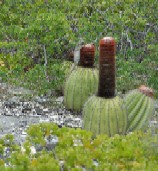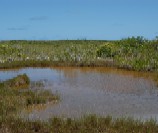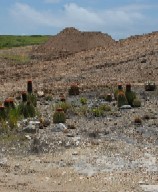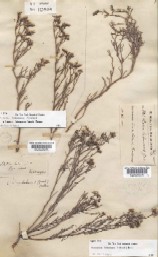UK Overseas Territories
- Home
- UK
Overseas Territories
- Biodiversity
- Threats
- Kew's historical links
- Ascension
- Anguilla
- Bermuda
- British Antarctic Territory
- British Indian Ocean Territory
- British Virgin Islands
- Cayman Islands
- Falkland Islands
- Gibraltar
- Montserrat
- Pitcairn Islands
- South Georgia
- Sovereign Base Areas on Cyprus
- St Helena
- Tristan da Cunha
- Turks and Caicos Islands
- Conservation activities
- Capacity Building
- Community involvement
- Links
- Contacts
UK Overseas Territories Programme
Turks and Caicos Islands: The Territory |
||
 |
The Turks and Caicos Islands (TCI) are the most south-easterly of the islands in the Bahamas Archipelago, lying about 145 km north of Haiti. There are about 120 low-lying limestone islands and cays. Half of the land area consists of wetlands. The archipelago has a dry tropical climate. The islands are a popular tourist destination and provide off-shore banking facilities. The Turks Islands take their name from the Turk's head cactus (Melocactus intortus), which is widespread on the islands. Its name comes from the spiny red cap on top of the swollen stem. |
|
Biodiversity – plants and animals |
|
| The soils of the central areas of the Caicos Islands are quite fertile, and support a range of trees and shrubs. Around the coasts, the soils are based on coral sand or fragmented limestone and the vegetation is more shrubby. One distinctive type of vegetation is the pineyards, where Pinus caribaea var. bahamensis dominates. On the Turks Islands, the sandy soil supports sparser vegetation of sedges and cacti. Over 550 plant species have been recorded in TCI, including 9 species unique to the islands and another 40 which only occur in the Bahamas Archipelago. The wetland complex on East, Middle and North Caicos is recognised as being internationally important as it mostly remains in its natural condition. The islands are surrounded by rich coral reefs. Some sheltered areas of coast are fringed with mangrove swamps. The islands are home to several unique iguanas, geckos and snakes. |
|
Threats to biodiversity |
|
| |
The increasing number of tourist resorts and tourist activities poses the greatest threat to the islands’ biodiversity. The Australian tree Casuarina equisetifolia, introduced to stabilise sandy soils, is a serious invasive, smothering TCI's natural vegetation. Pine trees on the Caicos Islands are threatened by an exotic scale insect which feeds on their sap. |
Unique species: Limonium bahamense |
||
| This succulent plant, known as island heather, thrives in the saline conditions of the salt flats of the Turks and southern Caicos Islands. It is unique to the islands and has been designated the islands' national flower. Island heather seeds have been collected for storage in the Millennium Seed Bank. |
||
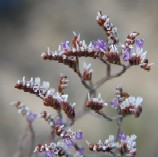 |
|
 |
Find out more about:Kew's activities in Turks and Caicos, past
and present: TCI's biodiversity: |


